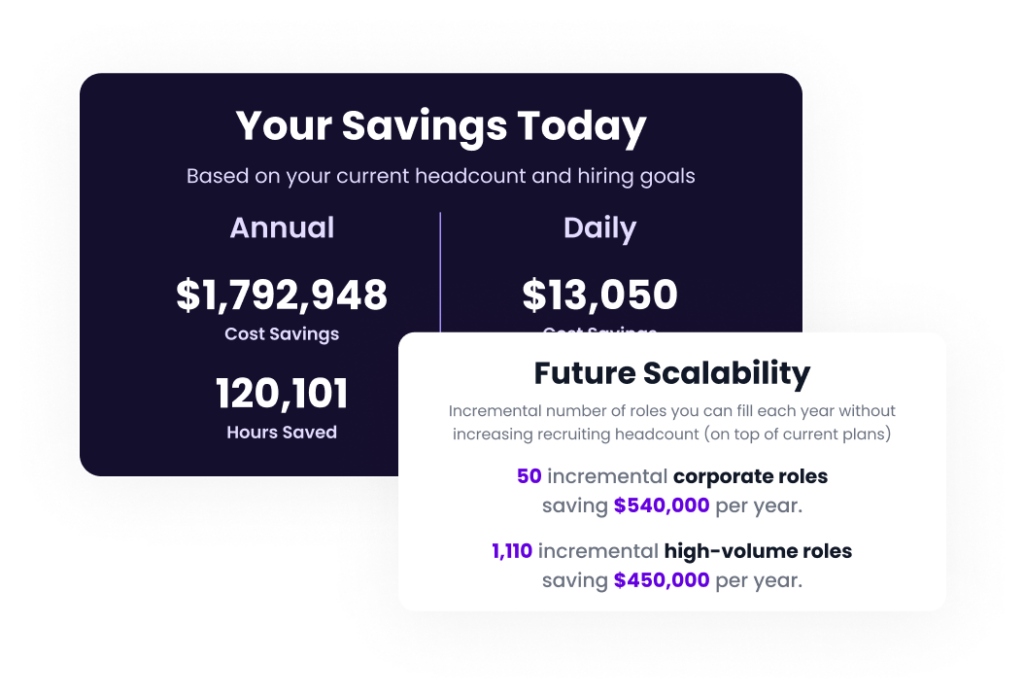In the Distance Economy, work transcends beyond physical offices and across time zones. “It doesn’t matter where you live” is now the new hiring mantra. More and more employers recognize that candidates want freedom, autonomy, and trust—all found in flexible and remote work arrangements.
While our new world of work widens the talent pool, it also widens the employer pool. Companies must offer applicants the work models that they seek, or get lost in the competition. After all, if your organization doesn’t give candidates what they want, another organization will.
Here are four trail-blazing companies that have reimagined what the workplace can be.
Spotify’s Work From Anywhere Program
In Spotify’s opinion, work is something you do—not somewhere you go. The streaming powerhouse uses their Work From Anywhere Program to allow employees to work wherever suits them best.
How They Navigate the Distance Economy
- Allow employees to choose their “work modes” (mix of home and/or office).
- Set up multiple registered entities in different locations across the globe for employees who want to work in the office.
- Focus on creating virtual experiences, rather than in-person events, to emphasize belonging across the company.
Why This Work Model?
On their HR blog, Spotify described how the flexibility within their work model benefits everyone. Flexible companies not only retain existing employees thanks to a better work-life balance, but they also attract large sums of candidates.
Spotify’s thinking in the right direction. Our latest data shows that 32% of HR teams expect to struggle with retaining talent in the next 12 months, and 28% believe that they’ll face difficulties in attracting qualified candidates. The way forward is clear, and it’s offering flexible work.
Zapier’s Long Remote Work History
Remote work is nothing new to Zapier. They’ve been remote-first ever since their inception in 2011. The software company’s employees are spread across over 18 different time zones and 38 countries.
How They Navigate the Distance Economy
- Establish a 100% distributed workforce.
- Create a global community founded on DEIB principles. Hold candid conversations on the experiences of employees and take active steps to boost diversity and inclusion.
Why This Work Model?
Zapier cited that on multiple grounds, remote work just makes sense. From a financial perspective, they don’t have to handle the significant expenses that come with maintaining a physical office. After all, flashy office perks are old news.
Their model also increases the amount of time that each employee has at their disposal. Without the distractions that arise in a traditional office space, Zapier allows for more valuable focus time. (And not having to sit in traffic during a long commute is a pretty sweet deal.)
HubSpot’s Flexible Work Options
“Work isn’t a place” defines HubSpot’s flexible work philosophy. In 2021, they shifted to a hybrid remote-office model.
How They Navigate the Distance Economy
The company offers three work arrangements to choose from, called @office, @flex, and @home.
- @office: Work from one of their offices for three or more days per week. Employees receive a dedicated desk space in the office.
- @flex: Work from one of their offices for two or fewer days per week. Employees get a “hotel desk” rather than a dedicated space, but will receive support in setting up a WFH office space.
- @home: Employees do the majority of their work from home and within a HubSpot-approved area. The company assists in assembling their home office.
Why This Work Model?
Before the switch to their current work model, HubSpot considered themselves a “remote-ish” company. However, the feedback from an internal survey signaled that they needed to evolve. Back when HubSpot closed their offices due to the pandemic, two-thirds of their employees reportedly planned on working remotely more often once their offices re-opened.
Determined to elevate their commitment to DEIB, HubSpot also cited how remote work serves as a crucial component in diversifying their community of talent and future employees.
Pinterest’s Pinflex Initiative
Two principles guide Pinterest’s work model: flexibility and collaboration. Their Pinflex initiative champions an autonomous workplace with a healthy dose of in-person interaction.
How They Navigate the Distance Economy
- Encourage employees to work wherever feels best, whether this means working at home, in an office, or another virtual location.
- Allow U.S. employees to live anywhere in the U.S., and international employees to live anywhere within the country or region where Pinterest employs them.
- Create in-person experiences for all employees to attend throughout the year.
Why This Work Model?
While Pinterest recognizes that most work can be completed anywhere, they also see the need for in-person collaboration to drive innovation and connection. Pinflex kills two birds with one stone.
Occasionally bringing employees together in person is a smart move. Studies show that remote workers feel isolated at higher rates than those that work on-site. Like Pinterest, companies should include strategies to foster human-to-human experiences within their flexible work plans.
The New World of Work Means New Hiring Tools
Spotify, Zapier, HubSpot, and Pinterest embraced flexible work in varying ways. But the common thread that unites them? They all use GoodTime.
The Distance Economy flipped recruiting on its head, but GoodTime Hire helps talent teams win candidates throughout each challenge. Hire harnesses Candidate Relationship Intelligence to build connections with every single applicant.
But don’t just take our word for it. Hear from HubSpot, Pinterest, and more in our customer testimonials.
Does interview scheduling automation make sense for my team?
ROI is key. This is not a time to invest in software that won’t bring you immediate value. So let’s eliminate the guesswork with our free ROI calculator.





